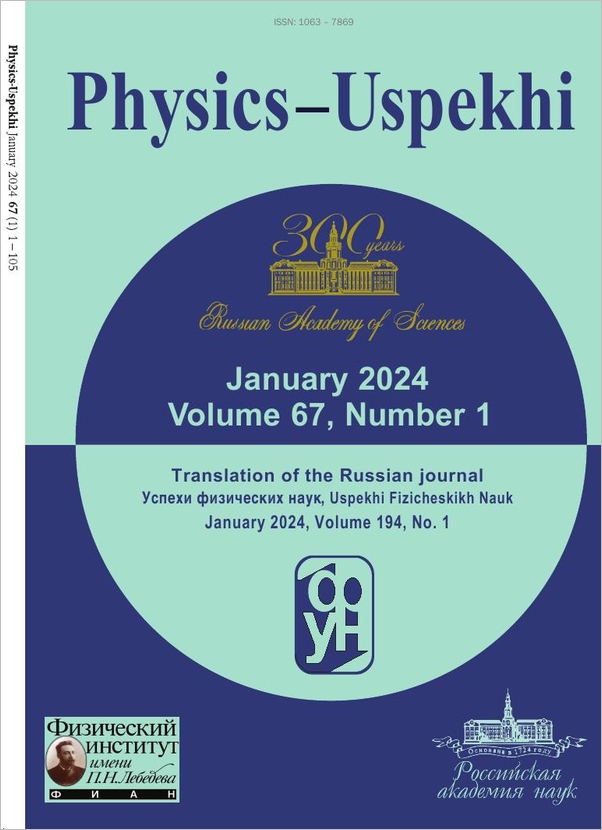|
This article is cited in 21 scientific papers (total in 21 papers)
METHODOLOGICAL NOTES
High-frequency asymptotic behavior of radiation spectra of moving charges in classical electrodynamics
I. I. Abbasov, B. M. Bolotovskii, V. A. Davydov
P. N. Lebedev Physical Institute, the USSR Academy of Sciences, Moscow
Abstract:
When a charge is moving in free space or in an inhomogeneous and nonstationary medium, it generates electromagnetic radiation. The spectrum of this radiation depends on the expression specifying the motion of the charge, and also on the laws according to which properties of the medium are changing in time and space. The asymptotic behavior of the radiation spectrum, i.e., the high-frequency behavior of spectral intensity, is studied. It is shown that if a charge moves along a smooth trajectory, or if the variation of the medium properties is described by a smooth function, the radiation spectrum at high frequencies decreases exponentially. Therefore, the radiation spectrum of a charge, moving along a smooth trajectory in a medium with a smooth inhomogeneity and (or) nonstationarity, drops abruptly to zero, starting from a certain value of the frequency. By a smooth trajectory we mean a trajectory of a charge moving according to the law $\mathbf{r}=\mathbf{r}(t)$, where the vector-function $\mathbf{r}(t)$ is continuous together with all its derivatives. Similarly, a medium with smooth inhomogeneities (or smooth nonstationarity) is described by functions, which are continuous together with all their derivatives of arbitrary order. A method is described that allows one to determine the upper limit of the radiation spectrum, i.e., the value of the frequency beginning with which an exponential decay of the spectrum takes place.
Citation:
I. I. Abbasov, B. M. Bolotovskii, V. A. Davydov, “High-frequency asymptotic behavior of radiation spectra of moving charges in classical electrodynamics”, UFN, 149:4 (1986), 709–722; Phys. Usp., 29:8 (1986), 788–796
Linking options:
https://www.mathnet.ru/eng/ufn8153 https://www.mathnet.ru/eng/ufn/v149/i4/p709
|


| Statistics & downloads: |
| Abstract page: | 76 | | Full-text PDF : | 22 |
|





 Contact us:
Contact us: Terms of Use
Terms of Use
 Registration to the website
Registration to the website Logotypes
Logotypes








 Citation in format
Citation in format 
